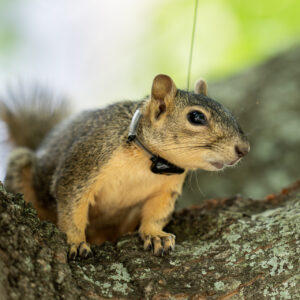ABIOTIC STRESS
Significance
Efficiency in water usage and ability to grow under heat stress are important for the long-term viability of peanut production in Texas. In West Texas, peanut is grown under irrigation, necessitated by the low rainfall (18 inches per annum in the Lubbock area). Energy costs for irrigation are a significant cost in peanut production, and availability of underground water limits where peanut can be cultivated. In the long term, it is estimated that at the current rate of agricultural and urban use of water, the High Plains Aquifer extending from South Dakota through West Texas could be depleted within 30 to 40 years. In South and Central Texas, peanut is frequently grown as a rainfed crop, and is subjected to periodic droughts and associated aflatoxin contamination. Peanuts have also been observed to suffer from high (100°+) temperatures even when irrigated sufficiently. Furthermore, there is evidence that the new high-oleic:linoleic cultivars are particularly susceptible to heat stress. The related effects of water and temperature stress have hurt peanut production in certain years, especially in the 2000 growing season, when heat, drought, and an early freeze resulted in one-third of the acres planted in Texas not being harvested.
Goals
Our long-term goal is the development of improved varieties that can be grown even under stress conditions. Our hypothesis is that it is possible to identify peanut germplasm with some heat and drought tolerance, and that it is possible to use this as parents in varietal development. Towards this end, we are working on three complementary approaches.
* Drought tolerance. Our short-term objective is to study cultivated accessions and germplasm identified by other as having some drought-tolerance traits. We will determine whether any of this material may be of use in West Texas; data may also be of use to collaborators from other states. Once promising germplasm is identified, we hope to use it in an improvement program. This collaboration involves Drs. Mike Schubert and Dana Porter (Texas A&M University), Diane Rowland (USDA- NPRL, Georgia), and Corley Holbrook (USDA- Georgia).
* Heat tolerance. We will study additional germplasm to classify major cultivars according to degree of heat tolerance, then determine the genetics of the heat tolerance trait. Of particular importance is determining whether it is possible to develop heat-tolerant high O/L lines. We are cooperating with Dr. John J. Burke in determining heat tolerance.
* Maturity. As mentioned under Seed Quality, we are working on development of an early-maturing peanut. This has the potential to reduce irrigation requirements and costs by thousands of dollars annually per farmer.
Research Program and Results
* Drought tolerance. We are growing 30 runner and 4 Spanish/Valencia lines at the West Texas Peanut Growers Research Farm under standard and reduced irrigation. Irrigation requirements for drought stress have been esablished by Drs. A. Michael Schubert and Dana Porter. In the summer of 2002, we have seen large differences in flowering and canopy temperature due to drought stress. We are also determining changes in osmotic potential and will have measurements of carbon isotope discrimination, specific leaf area, harvest index, yield, and transpiration efficiency later this year.





